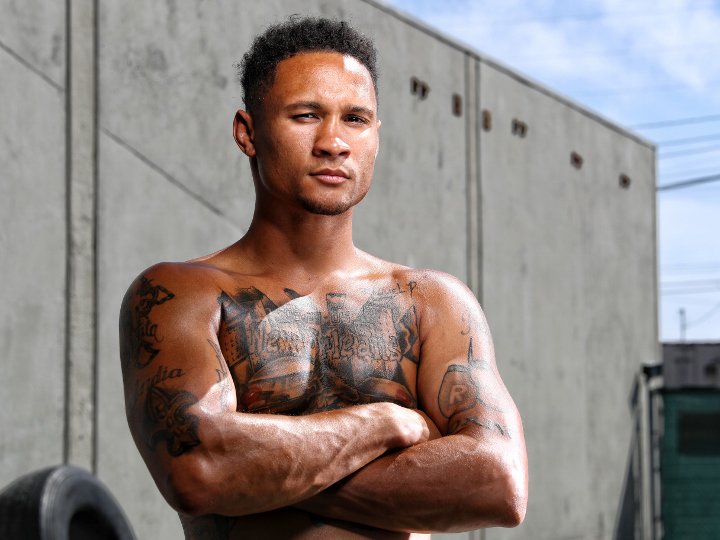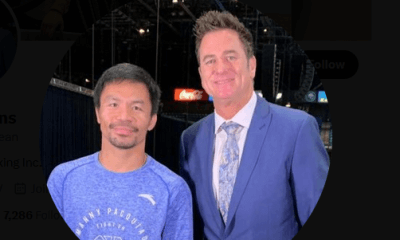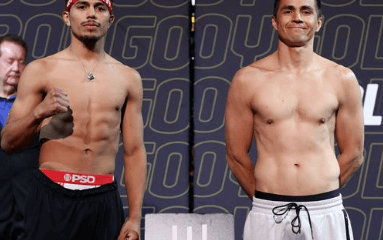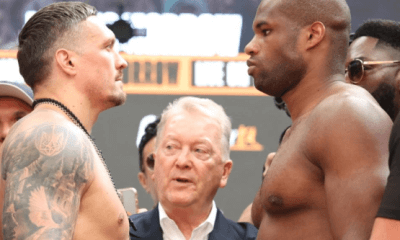Featured Articles
The Growing Legend of Regis Prograis

Call him Rougarou.
There are many different origin stories surrounding the creature called the Rougarou, and these mythic tales are as diverse as the many king cake traditions that exist throughout New Orleans and the rest of the French-settled communities around the world.
To some, Rougarou is a legendary creature who patrols the New Orleans city limits at night devouring whoever comes in his path. Some people associate it with a kind of werewolf. To others, it is more like a vampire but with the head of an animal.
But to Regis Prograis, it’s something as simple as a swamp monster, and perhaps the mystery of the creature under that connotation makes the Rougarou the scariest thing of all. It has no origin. It has no form. All it does is wreck things.
It’s no wonder a fighter such a Prograis would choose such a thing as his moniker. Prograis doesn’t care if you know very much about him at all. All he does is wreck things and he knows that the story of boxing’s Rougarou, the swamp monster from New Orleans who fights out of Houston, will someday be added to the lore.
Prograis met with the media on Thursday, April 11, at the Main Street Boxing & Muay Thai Gym in Houston to talk about his upcoming world title fight against Kiryl Relikh. It’s one of the semi-final bouts of the 140-pound World Boxing Super Series tournament, where Prograis is favored by oddsmakers to seize Relikh’s WBA title before moving on to the finals against either IBF champion Ivan Baranchyk or Scottish phenom Josh Taylor.
“I can’t wait to go out there and get my title,” said an excited Prograis about competing in his first world title fight against Relikh on Saturday, April 27, at the Cajun Dome in Lafayette, Lousiana. “That’s why I signed up. It’s the best people fighting the best.”
Prograis only transforms into his swamp monster alter-ego on fight night. Outside of the ring, he’s a mixture of quiet confidence and aggressive introspection. He pays serious attention to his craft but he’s also polite and thoughtful.
And while many fighters in the sport are hallmarks of discipline, souls who have crawled up out of life’s fractured gutters into something more akin to the light of an ordered purpose, there’s something about Prograis that just seems above even all that.
Bobby Benton, the fighter’s trainer, said Prograis is the kind who immediately impresses people, and it was true that nothing happened on Thursday to discredit him.
“My first memory of him was that he was out at the park at like five o’clock in the morning running,” said Benton. “He was only 16 years old back then, and I told his manager right then that this kid was going to do something special.”
Benton has trained Prograis, who was uprooted by Hurricane Katrina, for around five years now. Benton said Prograis is an aggressive worker, one who consistently exceeds all expectations. Wielding a single-minded approach to becoming the best fighter he can be, Benton said he’s seen Prograis constantly improve himself over the course of their time together and the fighter echoes the same.
“I’ve been studying the lives of great fighters for years,” said Prograis. “Not only inside the ring, but out. I study their lives so I can learn from what they did right and what they did wrong. Why would I want to go through something if I don’t have to?”
The result has been marvelous. Prograis is a true rarity in boxing, a pressure-fighting southpaw who slips and parries punches while moving forward in a patiently destructive way that might even make the great Roberto Duran feel proud.
And while Prograis seems destined to become a world champion, he’s unabashedly confident his career will turn out to be more. In fact, when asked who his dream fight would be out of any fighter in the world today, he did not hesitate to name the toughest in the sport, Terence Crawford.
“I want to compete. There’s a lot of fighters out there who don’t want to risk their winning records, but for me, I want to risk that. I want to compete with the best. It’s for my legacy.”
While there were not a hoard of media watching his every move on this day, Prograis is almost certain to be experiencing that kind of thing soon. After all, the more a fighter wins and the brighter the lights are when they do, it tends to attract throngs of sudden well-wishers and reporter-types hoping to break into an ever competitive news cycle.
The lives of professional boxers are amazingly unique in this way. Fighters are basically nobodies for the majority of their careers and then suddenly they become listed among the biggest celebrities on the planet.
Prograis was unmoved by the lack of attention he received on Thursday where a small Louisiana newspaper sent only one photographer and a local Houston television station sent a single cameraman to go along with three or so more people representing various online boxing media outlets.
To be blunt, I’ve seen fighters in such circumstances visibly upset they’re not getting the attention they either crave or think they deserve, but to Prograis it didn’t matter who was there or how many. He seems the type who is as authentic with one as he is with a thousand.
“What kind of kid is out there that early at five in the morning before school?” asked Benton with amazement in his eyes all these years later after his first encounter with Prograis.
While we didn’t say it, both of us were probably thinking the same thing. The kind who isn’t promotional hyperbole. The kind who wins world championships. The kind who simply is the truth.
A man in the midst of becoming a legend. Prograis, the Rougarou.
Check out more boxing news on video at The Boxing Channel
To comment on this story in The Fight Forum CLICK HERE
-

 Featured Articles2 weeks ago
Featured Articles2 weeks agoResults and Recaps from New York Where Taylor Edged Serrano Once Again
-

 Featured Articles2 weeks ago
Featured Articles2 weeks agoResults and Recaps from NYC where Hamzah Sheeraz was Spectacular
-

 Featured Articles2 weeks ago
Featured Articles2 weeks agoFrom a Sympathetic Figure to a Pariah: The Travails of Julio Cesar Chavez Jr
-

 Featured Articles2 weeks ago
Featured Articles2 weeks agoPhiladelphia Welterweight Gil Turner, a Phenom, Now Rests in an Unmarked Grave
-

 Featured Articles3 weeks ago
Featured Articles3 weeks agoCatterall vs Eubank Ends Prematurely; Catterall Wins a Technical Decision
-

 Featured Articles5 days ago
Featured Articles5 days agoManny Pacquiao and Mario Barrios Fight to a Draw; Fundora stops Tim Tszyu
-

 Featured Articles3 days ago
Featured Articles3 days agoArne’s Almanac: Pacquiao-Barrios Redux
-

 Featured Articles1 week ago
Featured Articles1 week agoFrom the Boondocks to the Big Time, The Wild Saga of Manny Pacquiao’s Sidekick Sean Gibbons














